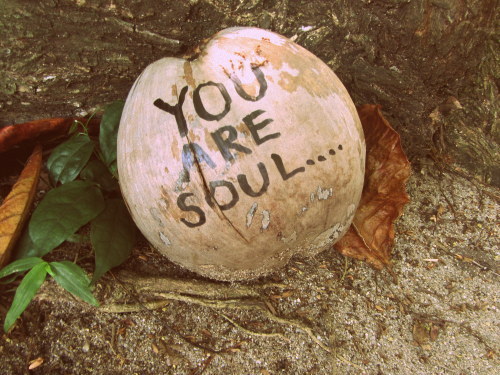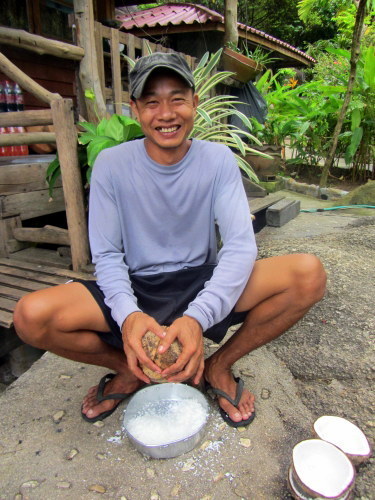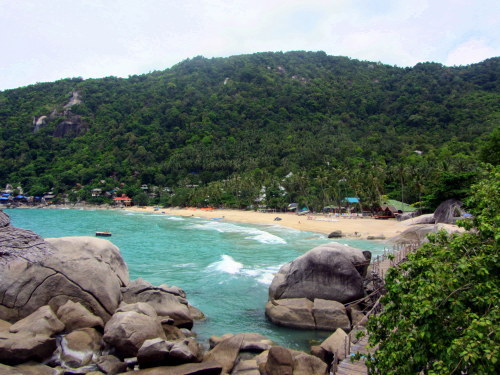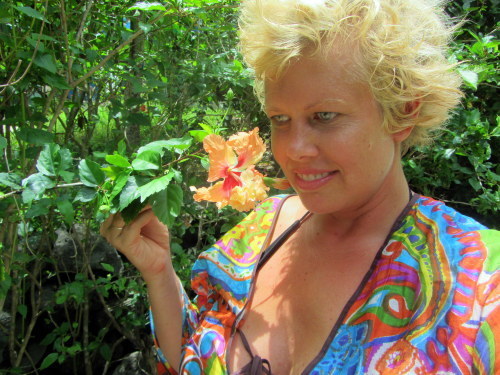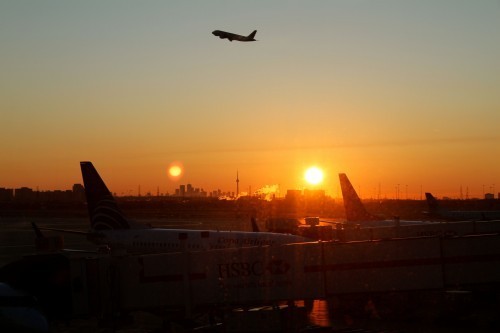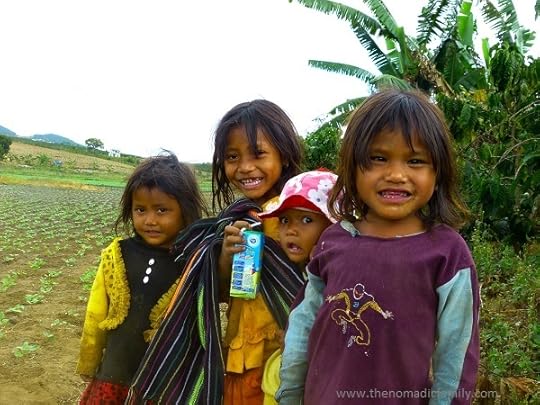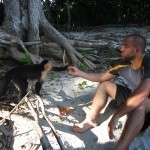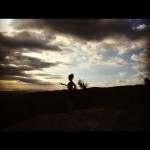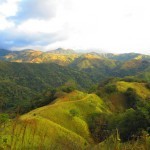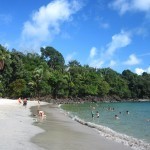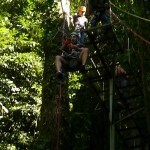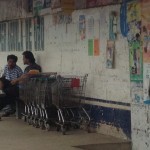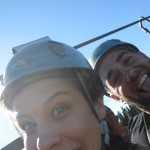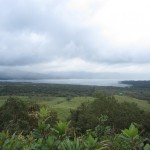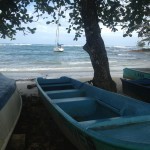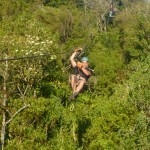Rolf Potts's Blog, page 60
June 9, 2013
Mobility is the first, prehistorical human condition
Vagablogging :: Rolf Potts Vagabonding Blog
“Contemporary life is perhaps unprecedented in the scale, quantity and global organization of modern journeys, and yet it is clear that travel is not a new human experience. Mobility is the first, prehistorical human condition; sessility (attachment or fixation to one place), a later, historical condition. At the dawn of history, humans were migratory animals. Recorded history — the history of civilization — is a story of mobilities, migrations, settlements, of the adaptation of human groups to place and their integration into topography, the creation of “homes.” In order to understand our present, we must understand how mobility has operated historically, in the past, as a force of change, transforming personalities, social landscapes, human topographies, creating a global civilization.”
–Eric J. Leed, The Mind of the Traveler: From Gilgamesh to Global Tourism (1992)
(1992)
Original article can be found here: Mobility is the first, prehistorical human condition
June 6, 2013
The Echoes of War Remain
Vagablogging :: Rolf Potts Vagabonding Blog
My travels in northern France have always provided vivid reminders of the battle for Normandy, which raged from D-Day through the summer of 1944. Though partially healed by the decades, scars still remain in the rolling countryside, picturesque villages, and gentle beaches.
Sixty-nine years ago today, the Allies waded ashore on the beaches of Normandy, France, and began the liberation of Europe from Hitler. A US veteran of the Normandy campaign said recently, “Out of my squad of 13, only 3 survived.” His story was not unique. The fighting was ferocious, and casualties on both sides were severe.
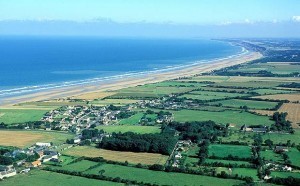
Normandy, France, today. Peaceful and pretty.
On each of my visits to this beautiful area, I have been struck by the locals’ affection for Americans. The French are not normally known for their liking of the US tourist, but in Normandy, the appreciation for the US sacrifice is strong. Several coastal villages fly American flags and bear plaques in the town square commemorating the day of their liberation by US troops in June of 1944.

D-Day in Normandy–June 6, 1944
Some reminders are particularly evocative for me. For example, I find few sites as poignant as the rusted ports lurking in the waves just off the coast of Arromanches-les-Bains.
Not far from the immaculate rows of gleaming marble headstones of the US cemetery at Omaha Beach, the tiny beach village of Arromanches-les-Bains was chosen to be the main port of the Allies. Still visible in the surf are the ghostly hulks of the prefabricated ports known as “Mulberry Harbors”, designed to move those millions of pounds of Allied men, vehicles, and supplies from ship to shore in the fight against Hitler.
[image error]
“Mulberry” Port in action on D-Day
The skeletal iron beasts, now rusted and worn away by decades of tide and salt water, serve as a reminder of the world-changing event that came to Normandy’s shores. And they remind us of the ordinary people—most now passed away—who found themselves swept up in the gale force of history.

A ghost in the waves.
The years go on, but the echoes remain.
Original article can be found here: The Echoes of War Remain
June 4, 2013
Vagabonding Field Report:Taking The Broken Path To Paradise In Koh Phangan, Thailand
Vagablogging :: Rolf Potts Vagabonding Blog
Cost/day: $45/day-room, $10 per class, average $10 per meal
What’s the strangest thing you’ve seen lately?
The coconuts here!! The coconuts here are magic coconuts. I am staying at the Sanctuary Resort on Koh Phangan and, here, the coconut water inside of them is green. It comes with spirulina and all kinds of grasses already mixed in. Oh, and the coconuts that drop onto the ground seem to grow words. Everywhere you look they are giving you messages that you just needed to read right that second.

Describe a typical day:
Well, most days, I get up early because my room starts getting hot, having no air conditioning. I have one of those green detox magic coconuts and a beautiful breakfast from the delicious food at the Sanctuary Resort restaurant. I then go to one of the classes, either yoga, or dance meditation, or my favorite class, Intuitive Painting. Then it’s time for exploring! For my first several days, I just stayed on the Sanctuary Beach which you can see from the picture above. But, then my curious nature, got the best of me, and I knew that it was time to explore the rest of the island. So, yes, I crossed a very dangerous, rickety bridge to the next beach over and found the beach I called Paradise!! I liked that beach even better. Reminded me of how in life, we often settle in for what is “good enough.” It’s not until we go down that path that seems a little scary that we discover what we had been searching for all along.
Describe an interesting conversation you had with a local:
Well, I had been enthralled with the magic coconuts that had been everywhere on this island. Funnily enough, on the way back from the Paradise beach, I ran into a man that was grating coconuts by hand. He was sitting on this stool that had a grater on the end of it. He had the biggest smile on his face, and you could tell he was completely in the moment with the work that he was doing. It was those unspoken words and that moment that meant more to me than the words we actually spoke. But, I thanked him for his smile and asked if I could take his picture. Now, when I find myself outside of a moment that I’m actually in, I remember the coconut grater and bring myself back to the present!
What do you like about where you are? Dislike?
I loved the interesting people at the Sanctuary Resort the best. I met lots of like-minded people and people who seemed to treasure other people and life itself. The Sanctuary was located on a beautiful bay that I could have sat and just watched for hours, (and I sometimes did!) However, I thought the rooms there were kind of pricey for Thailand, especially for what I got. I spent $45/night and had no air conditioning, just a very basic room filled with lots of bugs. I am not the type of person who always needs air conditioning, but it was so hot there, you really needed it. They do have rooms with air conditioning, but those are even more expensive, and they were sold out of those. Plus, the cost of taking the classes was pretty high as well.
What new lesson did you learn?
I learned to pay more attention to my adventurous urges and listen less to my fear. I went across that rickety bridge because I could already see the beautiful beach that was on the other side. In life, we don’t always get to see ahead of time what lies across those scary bridges, but I think if we will just envision Paradise, then that will be what we create. Of course, things may not always be what we imagined on the other side, but those things, I think, are things we are supposed to experience to get there. If we envision Paradise, that will be enough to give us the courage to cross the bridge. If we envision all of our fears, it takes our focus off the other side, and we will trip over our fear.
Where next?
I am back temporarily in the place I was living before this journey, Oregon, so that I can wrap up some things, sell my house, and move onward to a life of full-time vagabonding.
For more about my travels and great advice on beaches and islands, check out my website This Way To Paradise and my Facebook page!
Original article can be found here: Vagabonding Field Report:Taking The Broken Path To Paradise In Koh Phangan, Thailand
On the internet & experiences, apples and dragon fruit
Vagablogging :: Rolf Potts Vagabonding Blog
It has occurred to me that the internet is, perhaps, the single greatest boon to the traveling world and, simultaneously, the biggest detriment.
On the one hand, the ability to keep in touch with the people who matter and are left behind, the ability to quickly search destination focused information, the ease of book tickets: plane, train, event or movie in just about any country in the world have made the travel experience so much “easier.” Travelers no longer need to feel like they are “alone” in the world or their experience. Blogs and online communities provide a thriving pool of fellow adventurers who “get it” and who are eager encouragers and a wealth of information for the newbie traveler who is nervously taking his first steps in the great big world. The old standard guidebooks are giving way to first hand, up to the minute information available online with a quick search that delivers a double handful of blogs by likeminded folks who’ve been where you want to go within the last month and are happy to share their favourites as well as their list of “don’t be bothered” for anywhere you want to go. It’s great, right?
Except when it’s not. The thing is, I don’t think most people even realize that it’s not. We’re all so irrevocably “plugged in” that we don’t even realize what we’re missing, but I promise you, we’re missing. Gone is the joy of authentically discovering something new without the pre-read experience of six other bloggers to frame your thought process on what you’re seeing. Gone is the need to hit the ground running and struggle through without “help.” Gone is the quiet within your own mind that comes from being alone in your own soul, without the tether to “everyone and everything.” Gone is the slow blossoming of deep thought and self discovery that comes with that quiet, and that intentional void. Our experiences are constantly compared and measured by those of others, so easily available online. We read our favourite blogs with longing, wishing our lives could be as cool and full of adventure as theirs, without realizing that they are also reading someone else’s blogs, comparing in some other way. The internet has become the ultimate tool for idolizing and one-upping one another in an endless comparison of “experiences.” Only what we’re doing is comparing our weaknesses (which we know all too well from the inside out) to someone else’s strengths (or our perception of them.)
Experiences can’t be compared. It’s like apples to dragon fruit.
It seems hypocritical for someone like me, a blogger, a writer, someone dependent on the internet and the online travel industry to even say such things out loud. I know. Part of me apologizes. But part of me also begs you to unplug, stop reading blogs, quit booking tickets and “experiences” online months in advance and lining out your itinerary like pool balls expertly aimed at velvet pockets. Part of me begs you to step into the void, with faith in the world and trust in your own ability and just go it alone in your own mind for a while. Take a book for company, and a journal to write in. Travel with someone you love or would like to know better. Leave the clamour of the online voices out of it. Those things that are “gone” as a result of our endless connectivity aren’t really gone. They’ve just been beaten out by the incessant beating of other peoples’ drums. You’ll find yourself, your own authentic thought process and experience right where you left them, patiently awaiting your return. I would go so far as to argue that until you’ve found a way to cut that cord and be in one world at a time, you haven’t yet seen the world, really seen it, through your own eyes.
What do you think? What are your experiences? Does the proliferation of travel material and tools online help, or hinder the experience of travel? Have you ever truly unplugged? What happened?
Original article can be found here: On the internet & experiences, apples and dragon fruit
June 2, 2013
Sometimes we travel to view the kinds of things we ignore at home
Vagablogging :: Rolf Potts Vagabonding Blog
“We travel long roads and cross water to see what we disregard when it is under our eyes. This is either because nature has so arranged things so that we go after what is far off and remain indifferent to what is nearby, or because any desire loses its intensity by being easily satisfied, or because we postpone whatever we can see whenever we want, feeling sure we will often get around to it. Whatever the reason, there are numbers of things in this city of ours and its environs which we have not even heard of, much less seen; yet, if they were in Greece or Egypt or Asia…we could have heard all about them, read all about them, looked over all there was to see.”
–Pliny the Younger
Original article can be found here: Sometimes we travel to view the kinds of things we ignore at home
May 30, 2013
New museum to see: The “English Pompeii” is finally on display
Vagablogging :: Rolf Potts Vagabonding Blog
As a fan of great museums, England, and historical stuff in general, I’m excited about a brand new museum that has just opened this week.
Located in the historic dockyard of Portsmouth on England’s picturesque south coast, the Mary Rose Museum houses the sixteenth-century hulk of the HMS Mary Rose, the pride of Henry VIII’s navy. Built in 1511, the massive warship sank off the coast of England in 1545 while fighting the French fleet. After ages under the waves, her remains were resurrected from the sea by marine archaeologists and installed in the new museum. A museum that, incidentally, is situated in the very dockyard in which the ship herself was constructed.

Remains of the Mary Rose
But it’s the collection of objects from within the ship—thousands of sixteenth-century items being called the largest trove of Tudor-era artifacts ever assembled—that are the real stars of the museum. By a stroke of fate, the silt of the sea floor created a virtually airtight tomb for the small objects within the vessel. The resulting collection of relics is so well preserved that it has been dubbed “the English Pompeii” for its quality and poignancy.
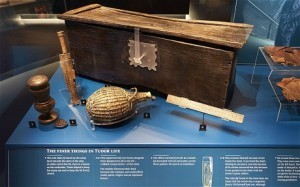
Sixteenth-century artifacts from the Mary Rose
The artifacts on display within the hull include miraculously preserved musical instruments, rosaries, board games, silverware, weapons, book covers, medical equipment, furniture, coins, and even the remains of several of the Mary Rose’s sailors. Facial reconstructions of the recovered skulls put a human dimension to the 500 men who perished with the ship, as do the everyday items they used. Combs with Tudor-era lice still trapped in them are also in the exhibit, as are the remains of the ship’s dog.
Taken together they are sure to tell a story of lives lived and lost within a sixteenth-century ship’s creaking timbers.
I can wait to see this for myself.
Original article can be found here: New museum to see: The “English Pompeii” is finally on display
Book Review : Burmese Light
Vagablogging :: Rolf Potts Vagabonding Blog
 Burmese Light - Impressions of the Golden Land
Burmese Light - Impressions of the Golden Land
by Hans Kemp and Tom Vater
Visionary World, 2013 (
buy on Amazon
)
“Impressions of the Golden Land” is quite an apt subtitle for Burmese Light as this book literally brings to the table (a coffee-table, to be precise) two kinds of impressions. The visual impressions of photographer Hans Kemp, and the personal travel impressions – translated into words – of Asian-focused writer Tom Vater. If that was not enough, even the publishers’ name, Visionary World, further sanctions the direction of this volume’s journey: a pictorial trip through the Southeast Asian country that has been twitching, boiling, and changing more than any other in recent years. And, to give credit where is due, the impressions “Burmese Light” is made of come from the minds of two adventurers with a long, exciting past of Asian discovery and residence. Believe me: you, the reader, could not find better guides to tackle the lights and shadows of Burma/Myanmar with.
Kemp and Vater have taken an accurate, sensitive and contemporary picture of Burma. This book comes to fill a gap in the travel literature by directly digging back to its own early sources. The volume, in fact, is peppered with citations of writers and scholars who have lived and loved Burma before the authors. Kipling, Orwell, Gascoigne, Wheeler (not the Tony of Lonely Planet fame, to be precise) are just some of the names gracing each chapter’s introductory pages before giving way to the array of powerful visuals provided by Kemp’s camera and Vater’s razor-sharp descriptions and highly graphic prose.
Light and darkness, as I mentioned previously: because the authors decided to present their own take on classic Burmese destinations (Yangon, Inle Lake, Mandalay, Bagan), without forgetting to explore other lesser-known places (Mrauk-U and cruising down the Irrawady river). However, this book is not just a particularly vivid travel memoir, as it also presents well researched chapters on many aspects of those traditions Burma is still rich in. Understand about monkhood in the country, learn to respect the cheroot – the most loved local kind of cigar – as a cultural symbol, spread thanaka all over your face, and enjoy the descriptions of street life and food at the intersection of the Southeast Asian and the South Asian worlds. By flipping Burmese Light’s pages I got intensely taken back to the time I ventured along the same dusty potholed roads, finding my way in a completely blackened downtown Yangon that resonated with the rhythmic chug of electric generators. And even if you are not as brave as the authors, be sure that you will feel your armchair blaze in shades of Burmese jade and gold, as long as you will keep this volume open on your lap. This book is a necessary addition to the libraries of all those who consider themselves to be lovers of Southeast Asia.
Check out a video book trailer here
Original article can be found here: Book Review : Burmese Light
Vagabonding Field Report: Cool Aliveness With Some Bull Riders In The Mountains of Dalat, Vietnam
Vagablogging :: Rolf Potts Vagabonding Blog
 Cost per day (for a family of five): $68
Cost per day (for a family of five): $68
$18 room
$25 food
$25 entertainment
Strangest things we’ve seen lately:
Back home, before 2011 when we hit the road to become The Nomadic Family, we used to not move without seat belts. I would allow the kids to unbuckle only when the car came to a complete stop in the driveway, and not a second earlier. Today, after hitchhiking on the back of banana pickup trucks throughout Central and South America, our motorcycle accident in Cambodia, and most recently, after sitting on the roof of a jungle expedition truck in Gopeng, Malaysia; we no longer regard transportation safety a parental concern. (God help us!) Strangest thing I’ve seen lately, is all five of us on the back of motorcycles on the curvy mountain roads surrounding Da Lat, Vietnam, with not a care in the world. I’ve spent my entire motherhood telling the kids how motorcycles were death traps, and here we are, with the Bull Riders of DaLat, on motorcycles. Strange, and liberating, indeed.
A typical day in cool, crisp Da Lat, Vietnam:
There are two typical sorts of days: adventure days and chill out days. On adventure days, we’d take the Bull Riders of Da Lat for off-road, unreal magical insights into Vietnamese society and unreal nature. They’re fun-loving staff would give the kids individual attention and love and we’d laugh the entire blessed time. On chill out days, we’d do our studies quietly in the room/apartment at Bihn Yin Hotel and then go walk the streets. The market of Da Lat is magical, maybe even more-so at night. The food is amazing, the people are sweet, the weather is unreal. So walking those hilly streets, strolling around the lake, or going to the market and stopping by for sweetened bean curd tea was always a treat.

Sweet market vendors with our kids
Fascinating conversation with a local:
We spent most of our time in Da Lat, and, in case you haven’t noticed, totally fell in love with the Bull Riders. There were things that fascinated us in talking with them- how humble Uncle Hung this professional guitar player was, how hard Hin works to develop a name for this hard-working little band of motorcycling tour guides, and how Vietnamese government won’t let their people go out and explore the world so easily. The idea of not being free to travel floored me, let alone the other restrictions of strict censorship with no Facebook as just one example. I spent a good deal of my time in Vietnam falling in love with the people and then slurring ‘Damn Communists!’ under my breathe when we were spit on or yelled at. So, fascinating was more so what was not said than what was. Fascinating was also a humble invitation by the Bull Riders to a ‘goodbye dinner’ which ended up being a 5-course 20+ people goodbye feast in honor of us. No wonder we still think of lovely Da Lat and still deeply, deeply sigh.
What we love and hate about Da Lat, Vietnam:
Loved
The people who embraced us and loved us with all of their hearts
The cool, coldness after a year of sweating in South East Asia
The 50 cent avocado pudding, coconut ice cream, and strawberry shakes
The $1.50 unreal lunches (next to aforementioned dessert stand)
The Bull Riders in every way imaginable (link to a cool Facebook album)
Hated
That we got so upset when we were spit at (clearly we shouldn’t have asked the lady for a different color of gumball)
That we still got upset when someone was nasty to us, even after we gained some wisdom (maybe for we feel it also ruins it for all the remarkably nice Vietnamese people out there who embrace foreigners with such love)
That the government is limiting its beautiful people in so many ways
That we couldn’t stay longer
A challenge we faced:
Theoretically, our family is training for our up-coming Annapurna Circuit Hike and Volunteer Trek for September 2013. Theoretically, we thought Da Lat would be a great place to get in shape and do some hikes in higher altitudes. Theoretically, it was perfect. Our challenge came in facing the reality of our choices. We did do hikes, actually, and realized how out of shape and not ready we are for high-altitude hikes. We did circumvent that 5 km lake a few times and found out that my knees (which I killed by running 10km a day on pavement in Lima, Peru in hiking boots) don’t do well on cement. So, Da Lat was great for getting us in shape but was more of an eye-opener for how far off we are from being ready to hike the 5000 km Annapurna.
What I learned:
Again, that people are people are people and that they are so beautiful no matter where you are in the world.
That are hysterically funny people.
Oh, and that if you buy the coconut ice cream and then a strawberry shake, even though it’s all home-made, it’s too much sugar for one stomach to handle well. Have one or the other each time you go to the market. 

Another over-enthusiastic market vendor grabbing our kids to kiss them  It looks aggressive but trust me it as adorable!
It looks aggressive but trust me it as adorable!
Where’s Next:
After Da Lat, Vietnam, we had some more time in Saigon where we learned to risk our lives every time we crossed the street.
You can find Gabi Klaf and her family now in their third year of non-stop vagabonding travel adventure at The Nomadic Family.
Original article can be found here: Vagabonding Field Report: Cool Aliveness With Some Bull Riders In The Mountains of Dalat, Vietnam
May 28, 2013
Vagabonding Field Report: Road tripping through Costa Rica
Vagablogging :: Rolf Potts Vagabonding Blog
Cost/day: $65/day
What’s the strangest thing you’ve seen lately?
The strangest thing had to be the view looking down at the tree tops when doing a superman over them. The superman zip lines were over a mile long through the mountains and they provided a uniquely strange – but amazing – experience.
Describe a typical day:
I rented a car and would drive from city to national park to beach. I’d go on hikes, find hot springs and surf for hours. Well, that is if you call what I was doing “surfing” since it was my first time. I was able to stand up on the board, I just wouldn’t stay standing for very long! I’d generally grab food throughout the day at small local restaurants and drink a lot of delicious Costa Rican coffee.
Describe an interesting conversation you had with a local:
I had an interesting chat with the people running the zip lines. They really enjoyed their jobs and feel like they get to play like kids all day. And unlike most touristy destinations, whose employees are quickly annoyed by tourists, they genuinely enjoyed everyone coming and having fun swinging through trees.
What do you like about where you are? Dislike?
Ha, the list of things to like is long: Beautiful beaches, amazing hikes, half mile long zip lines with breathtaking views, entertaining monkeys, great food, laid back culture.
I disliked that things were a little pricey and touristy for a Central American country. The country definitely knows the beautiful resources it has and promotes tourism much more (or effectively) than its neighbors.
Describe a challenge you faced:
I have been fortunate to never get sick on my travels. I’ve always been shocked by this, because I often eat and drink some very sketchy things. However, that streak ended in Costa Rica and I literally thought I was going to die. I have no idea what it was, but boy did I feel terrible. And to top it off, I still had to drive across the country to catch my flight a few days afterwards. I tried to recover as much as I could and then just bit the bullet and went for it. Driving through curvey mountain back roads, while feeling like death was not fun, but I made it.
What new lesson did you learn?
I learned that I too can get sick traveling. For some reason, I arrogantly came to believe that I was immune to it. But I was humbled in Costa Rica of all places – which was surprising. It was a big downer on my trip, since it took up several days, but the unexpected happens all the time when traveling and you have to embrace it – even when it sucks.
Where next?
Spain and Morocco – looking forward to crossing into another continent by ferry! If interested, you can follow me on Facebook, Twitter or my blog.
Original article can be found here: Vagabonding Field Report: Road tripping through Costa Rica
How do you make cross-cultural connections?
Vagablogging :: Rolf Potts Vagabonding Blog
One of the reasons we travel is to reach across cultural boundaries and experience the world from a different perspective. It’s that genuine human interaction between different worlds, within the same space that is the essence of the value of leaving home and “seeing the world.” That connection is the moment that makes all of the uncomfortable moments on the road worthwhile. It’s the window that allows us to really see into a place, and a people. It’s the window that allows us to truly see ourselves and learn about who we are and our place in the world at large.
In our experience, those connections rarely happen on tour buses, or packaged experiences. There’s no way to set them up, or manufacture them for mass market. The moment someone tries, something is lost. The best of them are beautiful serendipities.
Today I’d like to ask my fellow travelers how they make these connections.
How do you find ways to reach across the smiling language gap and touch souls with locals in the places you visit?
Do you have any tricks?
Any tips for us as we travel?
Do you have any secret weapons for disarming strangers and becoming friends?
We have two, that are effective without fail:
A soccer ball. Our boys discovered long ago that a soccer ball was a token of instant friendship. We buy them everywhere we go and carry them around. Pick up games always draw a crowd and friendly competition seems universal.
Music. We carry a guitar, a mandolin and a fiddle. I know, it’s ridiculous in some ways, but it’s also the very best of our gear in other ways. Music is also universal. It’s a gift that can be given in return for many kindnesses. It’s a way to connect with children and the elderly alike, and it’s an invitation to join in with a pan for a drum or a digeradoo, or a bamboo flute that you made yourself.
Some of our best friends have been drawn to us while traveling because of soccer balls and musical instruments.
What about you? How do you make connections? What are your best “tricks?” Tell me about your experiences, as I’m seeking to learn and deepen my own!
Original article can be found here: How do you make cross-cultural connections?
Rolf Potts's Blog
- Rolf Potts's profile
- 323 followers



